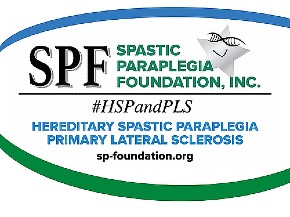When Jennifer Doudna and Emmanuelle Charpentier embarked on the project that would change science and medicine in incalculable ways, their intentions were much more muted. Theirs was a basic research inquiry into bacterial immune systems, not an attempt to develop a new tool to manipulate the genetic code.
Yet their discovery of the CRISPR-Cas9 editing complex, recognized Wednesday with the Nobel Prize in chemistry, has ignited what even scientists allergic to hyperbole routinely call a revolution in how science is conducted. Researchers and companies are regularly discovering new applications in agriculture, diagnostics, and therapeutic development.
“It’s a geneticist’s dream,” said Zachary Lippman, a plant geneticist at Cold Spring Harbor Laboratory.
CRISPR is not the first tool that enabled scientists to futz around with DNA; targeted genome-editing techniques like zinc fingers and TALENs were already around. But its ease of use and adaptability have exploded what was possible. It’s become a regular feature in research labs and accelerated the pace of scientific discovery, and it is the basis of new types of medicine being tested in clinical trials. When researchers wanted to expand testing strategies for the Covid-19 pandemic, they turned to CRISPR to build diagnostics for the coronavirus.
Doudna and Charpentier’s work amounted to the cornerstone for CRISPR. Since they showed off the skills of what’s earned the nickname “molecular scissors,” the technology has been honed and developed further by them and other scientists, increasing its precision and efficiency, as well as its potential reach to more of the human genome. (It should also be noted that who exactly discovered what features of CRISPR editing and when is still in dispute, at least from the perspective of who is going to receive key patents on CRISPR editing.)
Below, STAT outlines just some of the ways CRISPR is being deployed and the discoveries since the foundational work that have expanded the capabilities of the CRISPR Swiss army knife.
From an initial discovery to a ‘whole toolbox’
In their seminal 2012 paper, Doudna, Charpentier, and colleagues showed that CRISPR systems could travel to a specific spot in the genome, where an enzyme, called Cas9, would cut the DNA.
That amounted to a starter’s pistol in CRISPR editing research. Scientists have discovered that they could ferry in another gene with the CRISPR complex, enabling the system not only to delete an unhealthy gene, for example, but to insert a healthy one in its place. And while Cas9 is a powerful pair of scissors, it’s not always the best enzyme for every task. Researchers have adapted CRISPR with other forms of Cas9 or other enzymes like Cas12 to better apply the technology to what they’re trying to do to the genetic material.
“No single platform is going to do everything you might want it to do,” said Erik Sontheimer of University of Massachusetts Medical School. “Some people have been engineering existing forms of [Cas9] and that has been hugely useful. Other people have been tapping other natural forms of CRISPR and that has been hugely useful as well. It’s a whole toolbox now.”
Other researchers have advanced CRISPR by making its editing abilities more precise and efficient, with less of a chance of alterations in unintended parts of the genome or of typos in the targeted spot itself. There is now a form, for example, called prime editing, which allows scientists to swap any of DNA’s four letters for another, with less damage to the genome itself.
“Their work gave us the code” for further CRISPR research, said Shondra Pruett-Miller, the director of the Center for Advanced Genome Engineering at St. Jude Children’s Research Hospital.
A new way of making medicines
Scientists for decades have envisioned treating genetic conditions by fixing the disease-causing mutations themselves. It would be a way to treat the root cause of the illness — potentially as a cure — instead of just treating the symptoms it caused.
With its ability to edit DNA, CRISPR has advanced that possibility. Already, biotech companies (founded by Doudna, Charpentier, and other pioneers of the new technology) are testing CRISPR-based therapies for sickle cell disease, beta thalassemia, and congenital blindness in clinical trials. Next up could be Duchenne muscular dystrophy, cystic fibrosis, hemophilia, and others. There are even approaches for diseases that aren’t inherited, including HIV/AIDS and certain forms of cancer. Scientists are also trying to edit enough genes in pigs so that their organs could be safely transplanted into people.
Impact in agriculture
People have been adapting agriculture to suit their needs for thousands of years. CRISPR is the latest way to do that.
The initial target for plant scientists was to use CRISPR to design plants resistant to fungi and disease. But increasingly, by altering genes or enhancing or quieting the activity of certain genes, scientists are exploring how to increase crop yield or to bolster plants against certain environmental conditions and stressors.
Scientists can “massage” the genomes of plants and their expression patterns to engineer desired outcomes, Lippman said. “Where the field is really heading is that the tool gives you the power to quantitatively manipulate traits,” he said. “Agriculture is all about quantitative tuning.”
Concerns about other applications
Genome editing is such a powerful tool that U.S. authorities have labeled it a national security threat. They’ve warned that it could lead to new biological agents and have raised worries about one of the most powerful potential uses of CRISPR, gene drive, which is a way of altering evolution.
One of the other concerns has already become a reality. In 2018, a Chinese scientist announced the birth of the world’s first gene-edited babies — twin girls whose genomes he had edited while they were IVF embryos. It led to a global outcry over the ethics and scientific rigor of the experiments and for stronger guardrails against such work.
The global scientific community has broadly said that CRISPR is not yet ready to be used in germline editing — changing the genomes of sperm, eggs, or early embryos to create heritable changes. While the technique could potentially eliminate disease-causing mutations from family lines, most experts say the world has not sufficiently addressed all the outstanding technical, ethical, and societal questions that need to be resolved before any country greenlights such work.
Some scientists have become more open to the idea of one day CRISPR’ing early embryos or germ cells to prevent heritable illness. They generally draw the line, however, and say it should never be used for “enhancement” — using genome editing to, say, make someone taller or change their eye color.
Doudna in particular has become a leading voice around the ethical implications of her co-discovery, telling STAT just last month that germline editing should continue to remain off the table until CRISPR technology has been improved and other concerns have been addressed.
A game changer for basic research
If the therapeutic applications of CRISPR are still in development or early planning stages, the genome editor had an almost immediate if less visible impact on scientific research. Simply put, CRISPR as a lab tool has greatly expanded the type of research investigators can do.
Scientists can now easily knock out or change genes in cells or animals and see what happens — a real-time way of learning what different genes do and how they work in concert. It’s opened new ways of studying how organisms develop.
TALENs and zinc fingers, the earlier genome-editing tools, were comparatively bulky, required much more time to use, and demanded such a level of expertise that few labs were using the technology. Pruett-Miller said that something she spent years on in her Ph.D. program “now takes four days.” Labs around the world quickly embraced CRISPR as a research tool, even if they weren’t directly working on CRISPR-based applications in medicine or food.
“It’s robust. It’s consistent. You don’t have to be a specialist to make it work,” Sontheimer said.
Lippman said that soon after Doudna and Charpentier’s 2012 paper, he and colleagues set out on a project with both TALENs and CRISPR. “Within three weeks, we put TALENs to the side,” he said. “The pace of discovery is orders of magnitude higher” with CRISPR.
CRISPR includes a piece of guide RNA that shepherds the complex to a specific region of the genome for the cutting and editing to take place. Thanks to advances in other fields like genetic sequencing and the synthesis of genetic material, scientists can simply order the pieces of guide RNA they need for their research. They can essentially create different editors with a plug-and-play swap of the RNA.
“The whole thing about CRISPR is you can target your mutation in the genome to a particular stretch of DNA,” said plant scientist Pamela Ronald of the University of California, Davis. “The advantage over some other tools is that CRISPR is just much easier to use, much easier to program. Every plant genetics lab can use the technology.”
One of the many reasons scientists were cheering Doudna and Charpentier’s recognition Wednesday was that it amounted to a celebration of simple scientific pursuits that may not lead to anything groundbreaking, but sometimes do.
“It’s really a poster child for the value of basic research,” Sontheimer said. “Nobody was thinking about this in terms of genome editing. It was curiosity-based research. It was microbiology. It’s just what was discovered.”















